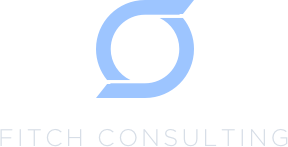A New Training Option: Integrating Blended and Flexible Learning into [Work] Life
Traditional methods of employee “training” frequently suffer from the same inherent flaw. They don’t inspire learning. Bullet points and multiple-choice quizzes are the bare minimum for transferring information, but they do little to ensure retention — and even less to engage attention. Most corporate training options will leave your company with a handful of employees who remember everything, another handful who retain nothing, and a majority in the middle who remember bits and pieces — possibly at the expense of the primary point.
Training versus learning
Training is organized and concise. It boils complex topics down to the fewest possible words and arranges them in neat lists on carefully arranged slides. Sometimes there are pictures — maybe even a video or two. At the end of the day, there will be some sort of test, and your employees might walk away with a preprinted certificate for their trouble — and your money.
So, if training resembles history’s most uninspiring university lecture, what does learning look like? Think kindergarten. We begin our “formal” education in an ideal learning environment, and as we “advance” through primary and secondary school, we gradually lose access to everything that inspired us to learn. Stories, songs, and games have been replaced — with PowerPoint slides and bullet points. “Training” is boring. Learning is interactive, messy, colorful, and fun. Learning happens when people feel comfortable making mistakes and trying new things — and when they’re given the options and autonomy they need to learn the way they learn best.
Blended learning
Instead of the info dump training model, provide employees with a learning experience. Blended and sustainable learning opportunities mean shifting our training focus — from how we teach to how employees learn. And rather than strain the limits of employee focus — and patience — autonomous, employee-led learning models are flexible and designed to engage interest, hold attention, and inspire retention.
Blended learning models benefits employees by giving them a combination of live facilitated discussion and web-based instruction. In person or on a live virtual workshop, employees can ask direct questions, interact with instructors, and participate in hands-on activities (e.g., stories, brainstorming, simulations, and challenges). E-learning or microlearning modules give them more control over the time, place, and circumstances of their participation — and grant them a healthy measure of autonomy over the pace of their learning.
Flexible learning
Flexible learning models benefit employees by offering more autonomy and can empower them to direct their own learning experience. A flexible learning model may incorporate any of several different components, including:
Short learning modules can be completed in less than 15 minutes. Workers report they are more likely to complete learning tools in short segments.
A form of microlearning with an added component of game-playing. Games increase engagement and retention of material.
75% of workers are more likely to watch a video than read content. Used intentionally in conjunction with other modes, video enhances retention.
Online and classroom. Allows users the ability to ask questions and take written notes. Increases opportunity for in-person reinforcement of new skills and ideas.
Audio content. Allows for the most flexibility. Company podcasts are especially successful as they are timely, informative, and engaging.
Action-based learning. Attaches tasks rather than questions for experience and evaluation. Allows users to practice and demonstrate understanding and mastery of material.
Includes access to off-the-shelf opportunities such as MOOCs, LinkedIn Learning, and similar online offerings that can be combined with other options to design inclusive and holistic learning modules.
Benefits of blended and flexible learning in the workplace
The benefits of blended and flexible learning are well-documented: higher retention, increased employee engagement, guided autonomy, lower costs, and — essential in today’s business world — the flexibility to reach all employees whether they work in the office, fully remote, or follow a hybrid schedule. With more than half of employees expressing a preference to work from home at least 3 days per week, companies must ensure no individual or team is excluded from the opportunity to learn, grow, and advance in their careers.
A healthy company culture embraces learning as fundamental to the fabric of its mission, and as such, makes learning accessible for all its employees through a variety of training options. Creating experiences is key to learning success. Experiences engage memory, so employees gain the information and tools they need to remember and implement what they’ve learned..
Visit fitch-consulting.com to learn more about engaging your employees with blended and flexible learning models.




